On May 4th, I had the opportunity to attend an event at Mt. Wilson Observatory celebrating the 100th anniversary of the official opening (first light was in 1917) of the 100-inch (2.54 meter) Hooker Telescope. Sponsored by the Institute for Student Astronomical Research (InSTAR) and PlaneWave Instruments, it was a afternoon through evening event that allowed us to get close to this historic observatory. The event included a full tour of the observatory, several informative presentations, dinner, and then viewing through the 100-inch telescope.
We arrived around noon, and broke into two tour groups to visit the telescopes. We started off from the Museum and headed past the 150′ Solar Tower toward the 60″ telescope. (Click on a picture for a full-sized version.)
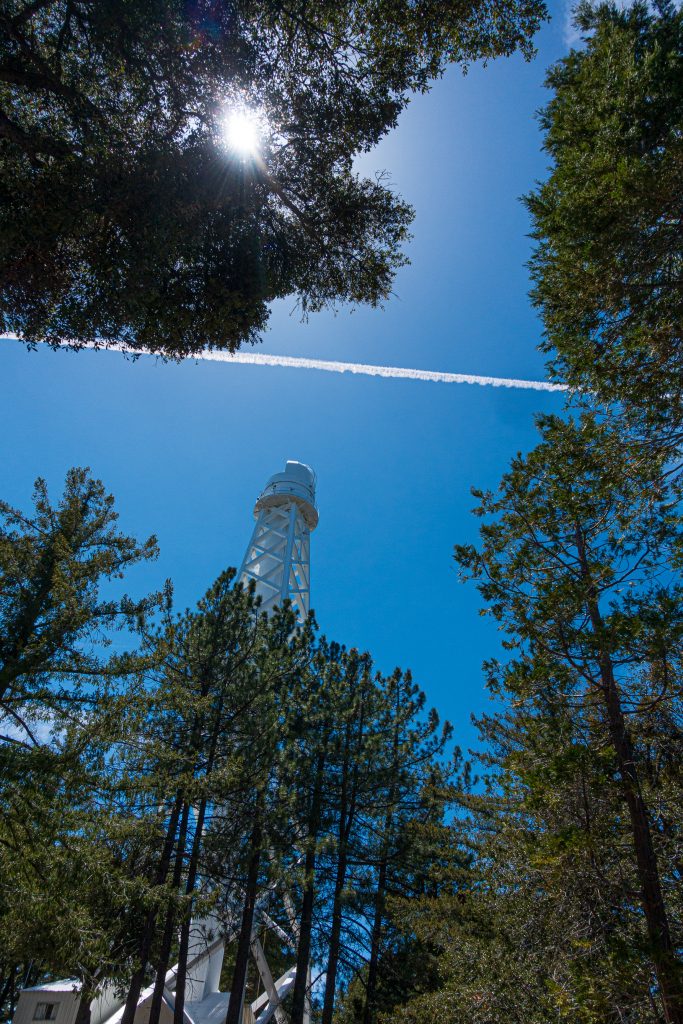
Our guide was Tim, a scientist from CalTech. Tim has been giving tours at Mt. Wilson for 30 years. These are real tours. You get to get inside the domes and touch the telescopes. There is a lot of history here and the guides present it very well. The 60-inch (1.52 meter) Telescope was the largest in the world when it went into service in December 1908.

The size and nature of the galaxy and the universe were at the center of debate in astronomy in the early 20th century. The answers were found at Mt. Wilson. A major discovery in this debate was made with the 60-inch Telescope by Harlow Shapley. Shapley had been hired by George Ellery Hale to work at Mt Wilson. Shapley, used measurements of Cepheid variable stars to determine the dimensions of the Milky Way. He determined that it is far larger than previously thought. He also established that our solar system was in a nondescript, off-center position in the galaxy.
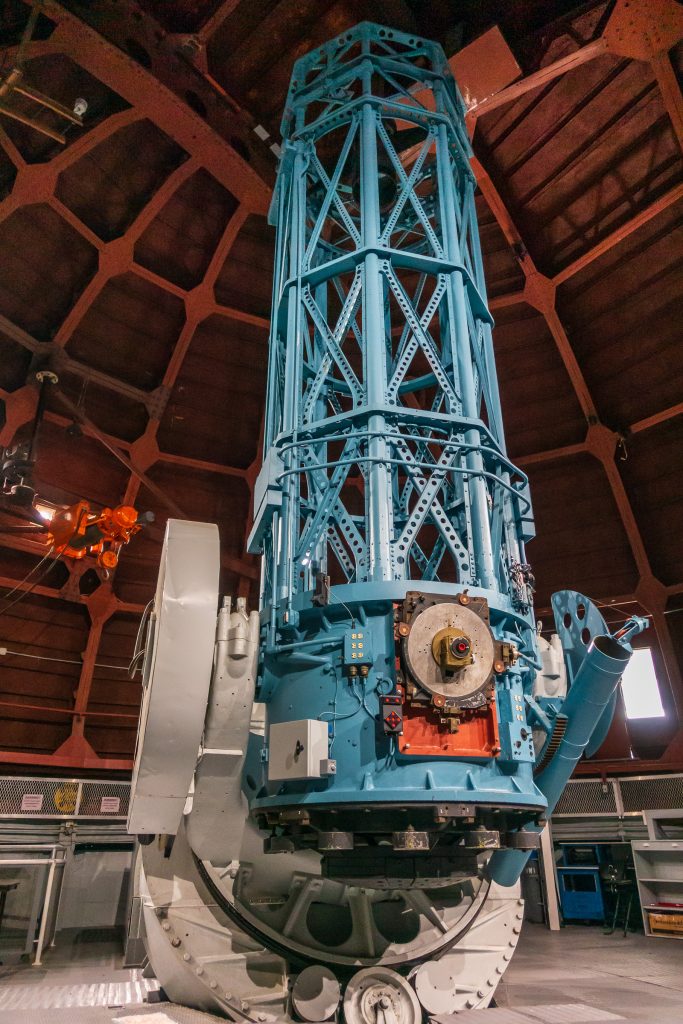
The 60-Inch Telescope was a marvel of engineering and construction. George Ellery Hale, the moving force behind Mt. Wilson Observatory, had a knack for raising money and a determination to build bigger and bigger telescopes. More information and more photographs below the fold.
The Mt. Wilson Institute has a fantastic website with all kinds of information on the history of the observatory and what you can do when you visit. They also deserve credit for taking over from the Carnegie Institute who had stopped operating the observatory in 1984. The grounds and the equipment are in great shape and they are doing a good job of getting science and educational work done at the observatory. You can sign up to view through the telescopes.
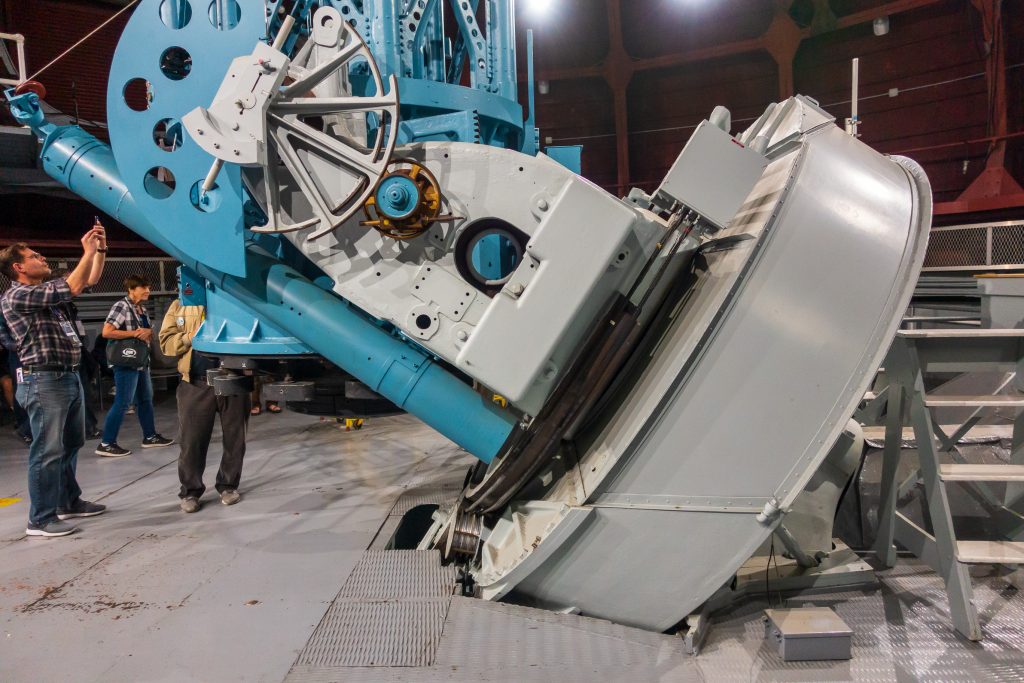
The massive tracking or right ascension axis floats on mercury, an innovation that solved the problem of creating bearings for the 21.5 ton behemoth. The tracking axis is driven by the large circular device on the right. with a 10-foot diameter drive wheel weighing two tons.

The 60-Inch Telescope has been adapted to support visual viewing. The telescopes at the observatory, like most professional observatories, are designed for imaging rather than visual viewing. This would have been photographic plates until the latter 20th century when electronic detectors took over. Spectroscopy plays a large role in astronomy, and both the 60-inch Telescope and the 100-inch Hooker Telescope were used for high-precision spectroscopy.
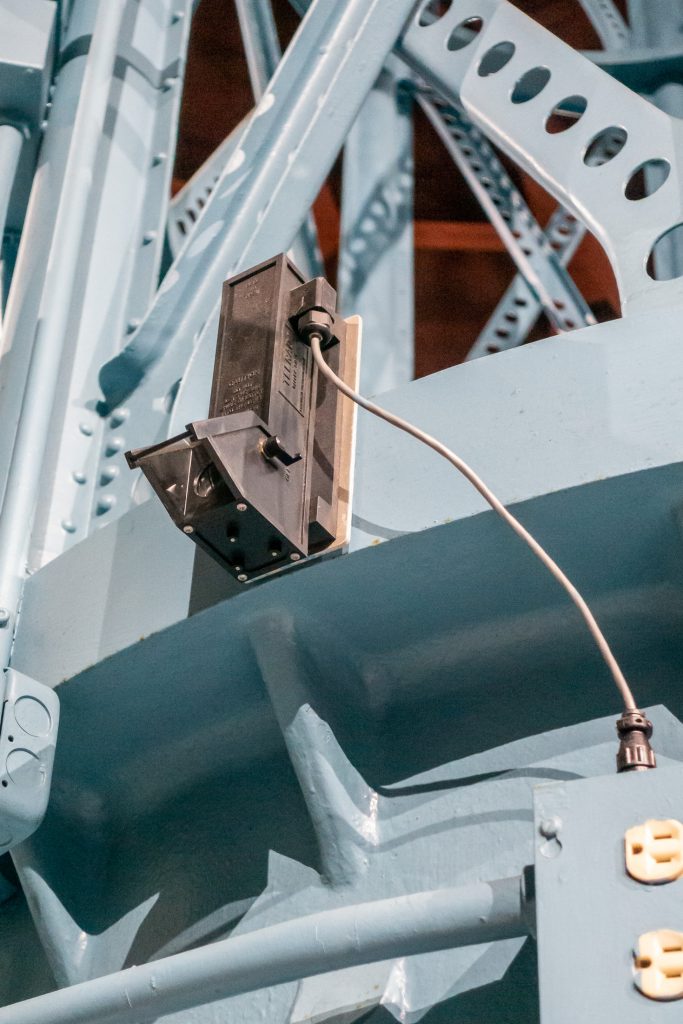
This big telescope has a nice amateur touch. This is a Telrad, a wide-filed viewfinder that is used to align the telescope when the encoders fall out of alignment. A nice $36 addition to a multi-million dollar (in current dollars) scope.
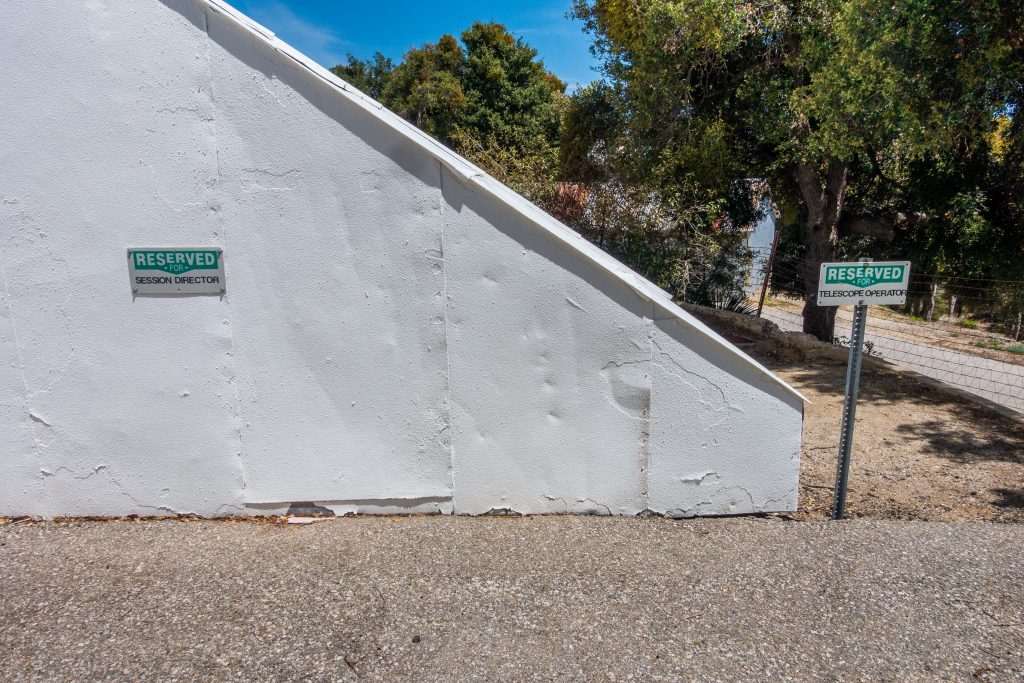
On the way out, I noted that the operator and session director have nice parking. We headed on to the 150-foot Solar Tower.
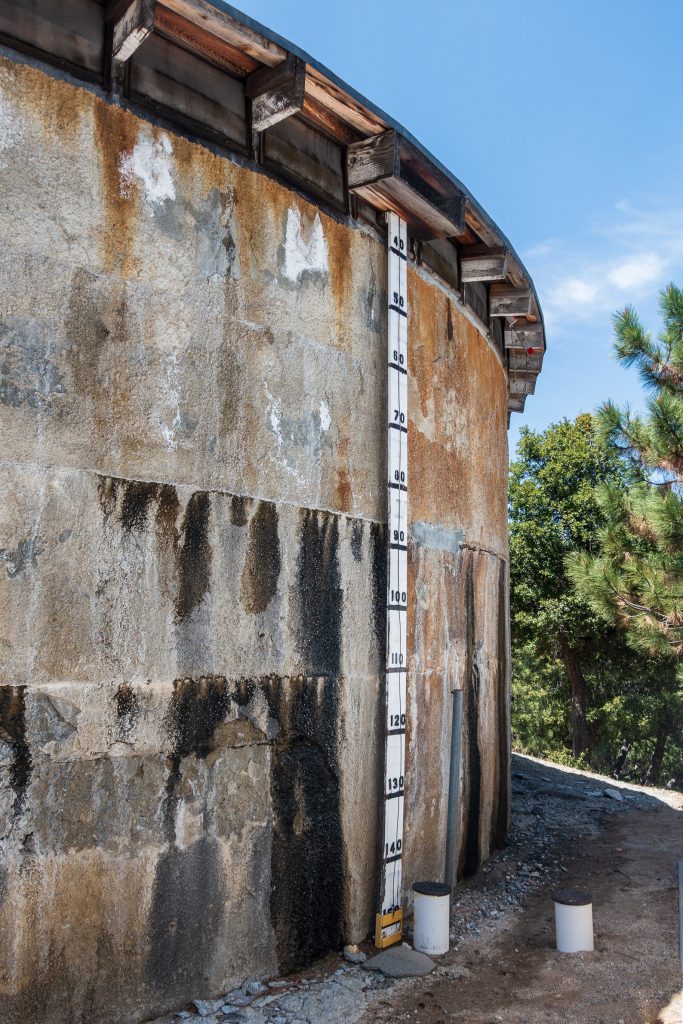
On the way over, we noted that the drinking water tank was full to the top.
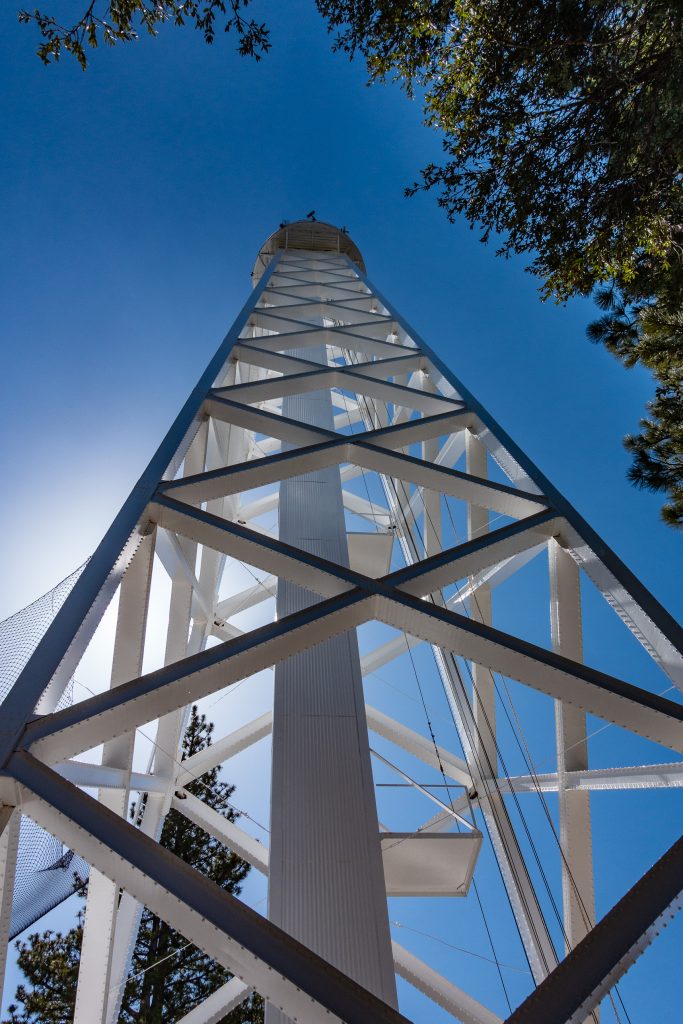
Hale started Mt. Wilson as a solar observatory. The Snow Solar telescope did groundbreaking work on sunspots and solar spectra. The 60-foot Solar Tower opened in 1908 and had much greater resolution than the Snow, and was used to reveal magnetic fields on the Sun. The 150-foot Solar Tower went into operation in 1912 and was the largest solar telescope for the next 50 years. It has unique tower within a tower design. The outer tower holds the dome a the top. The inner tower supports the optics at the top and the observing area, isolating them from the outer tower and allowing the telescope to operate in higher wind conditions.

Here is the sunlight shining down the inner tower.
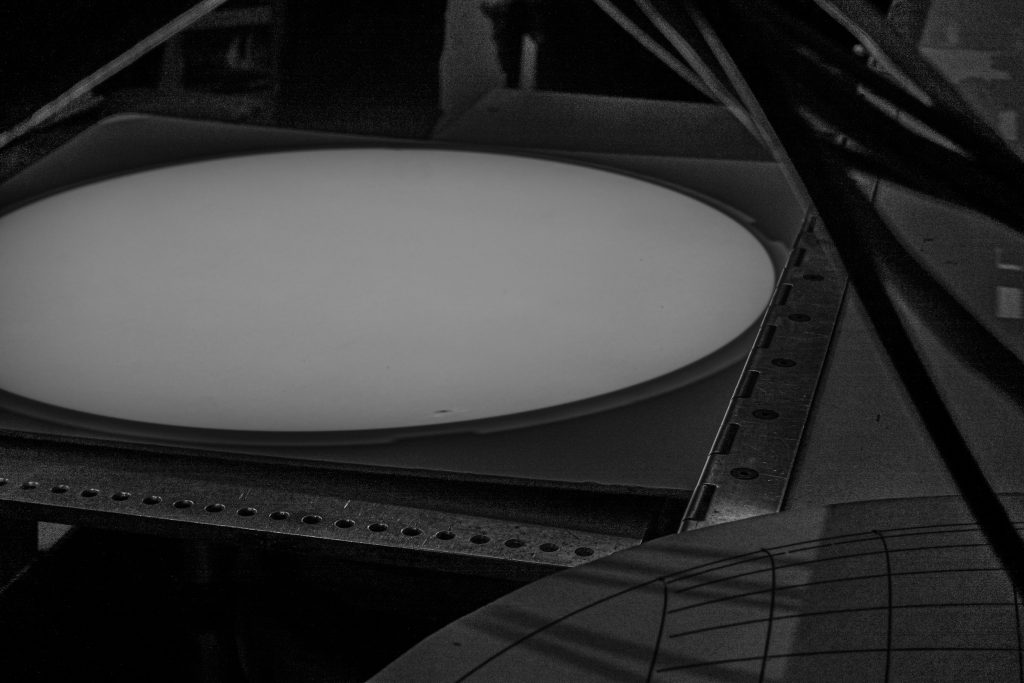
The Sun’s image lands at the bottom of the tower. You can see a small sunspot in the middle of the frame near the front edge of the Sun.

While the 150-Foot Solar Tower is no longer actively used for scientific study, volunteers keep a daily record of sunspot activity.

There is a high-resolution spectrograph 75 feet below the floor of the observatory. This was a key piece of scientific equipment when the telescope was in regular use.
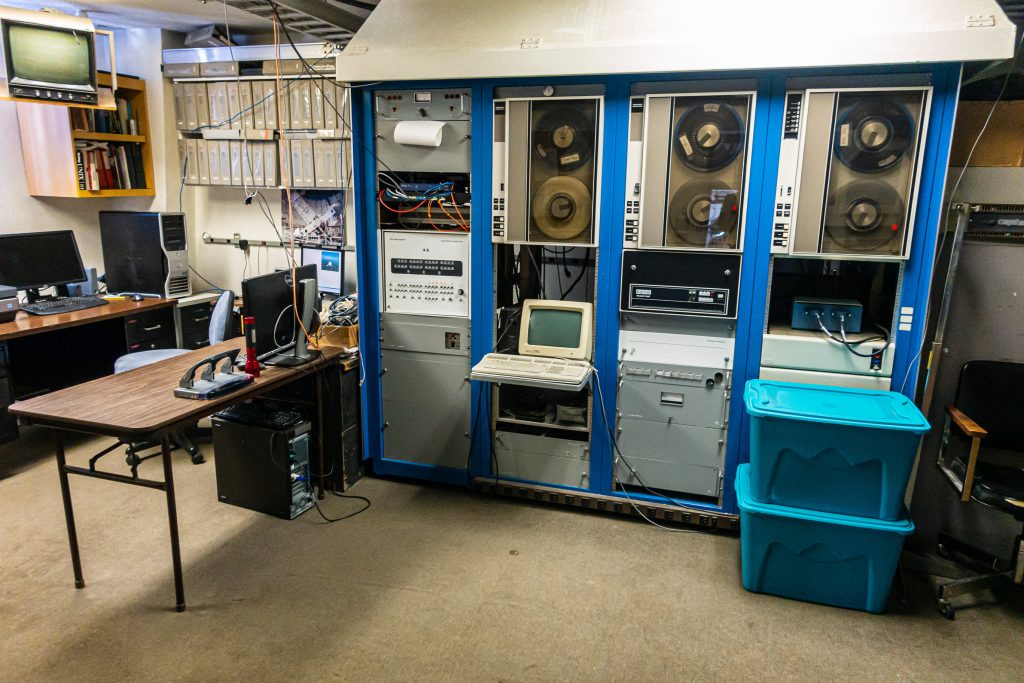
It would take some serious investment to get the old computer equipment upgraded to current standards.
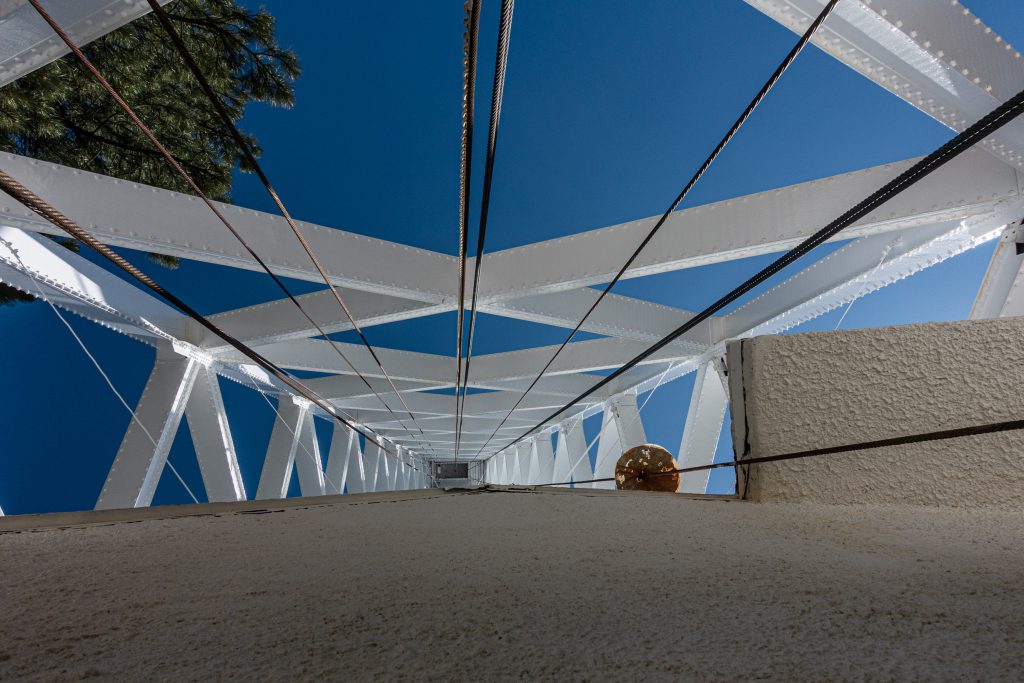
These cables pull a small elevator that the operators use to get to the top mirrors and lenses that track the Sun and focus the light down the tower.

Finally off to the big dome of the 100-Inch Hooker Telescope! Even before the 60-Inch Telescope was complete, Hale was making plans for a bigger telescope. He obtained $45,000 from a local businessman, John Hooker. This financed obtaining the glass and polishing it into the millimeter tolerance it would require to function properly. The total cost of the project was about $500,000 at the time. That would be $13 million today.
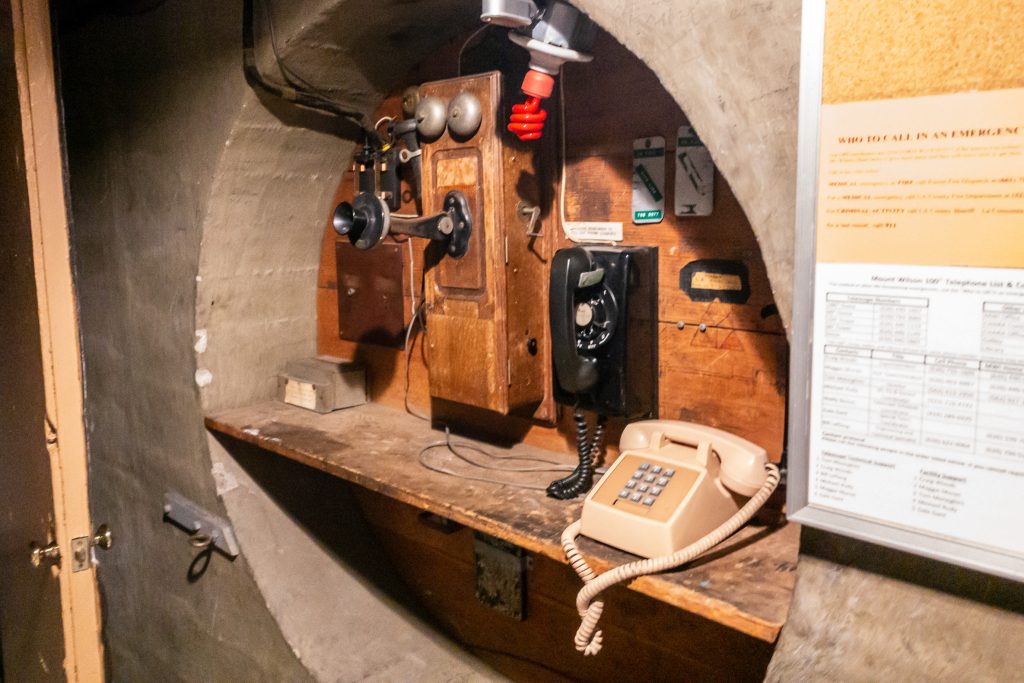
The long history of the use of the observatory can be seen in the multiple generations of equipment being used.
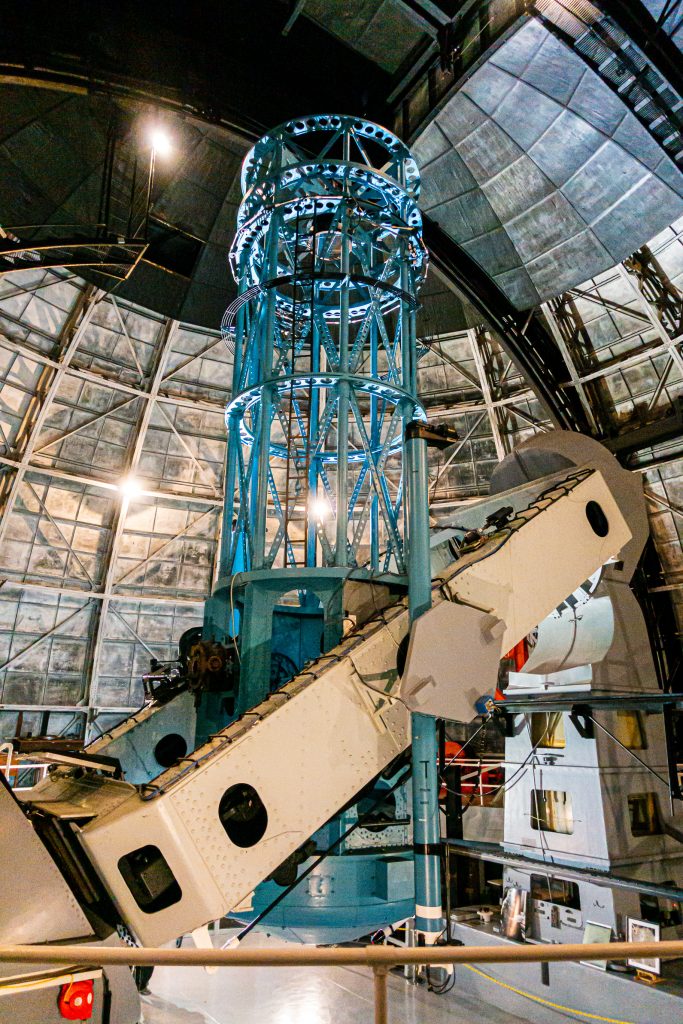
Here it is, the 100″ Hooker Telescope, the largest telescope in the world from 1919 to 1948. One note on dates. The Hooker Telescope was first used in 1917, but because of World War I, the observatory was not active until 1919 when it went into use for scientific purposes. In 1948, another Hale-sponsored project, the 200-Inch Hale Telescope at Mt. Palomar, replaced it as the largest telescope in the world.
Edwin Hubble joined the Mt. Wilson Observatory shortly after the Hooker Telescope became operational. As I mentioned above, the main controversy in astronomy at the time was the size of the universe and the nature of the nebulae seen in the sky. One theory was that they were part of the Milky Way, just baby solar systems. Evidence had been growing that they were much farther away, so far that they could not possibly be part of the Milky Way and therefore making the universe a much bigger place.
Hubble discovered a Cepheid variable star in the Andromeda galaxy. Cepheid variable stars absolute brightness is proportional to the timing of its variable cycle, a relationship
discovered in 1908 by Henrietta Swan Leavitt. This makes it a standard candle to measure distance. You observe a Cepheid star and measure its apparent brightness. Since you know its absolute brightness based on its variance, you can infer the distance to the star because light dims as an inverse square of distance. Hubble showed that Andromeda was 2.5 million light years away. But he wasn’t done.
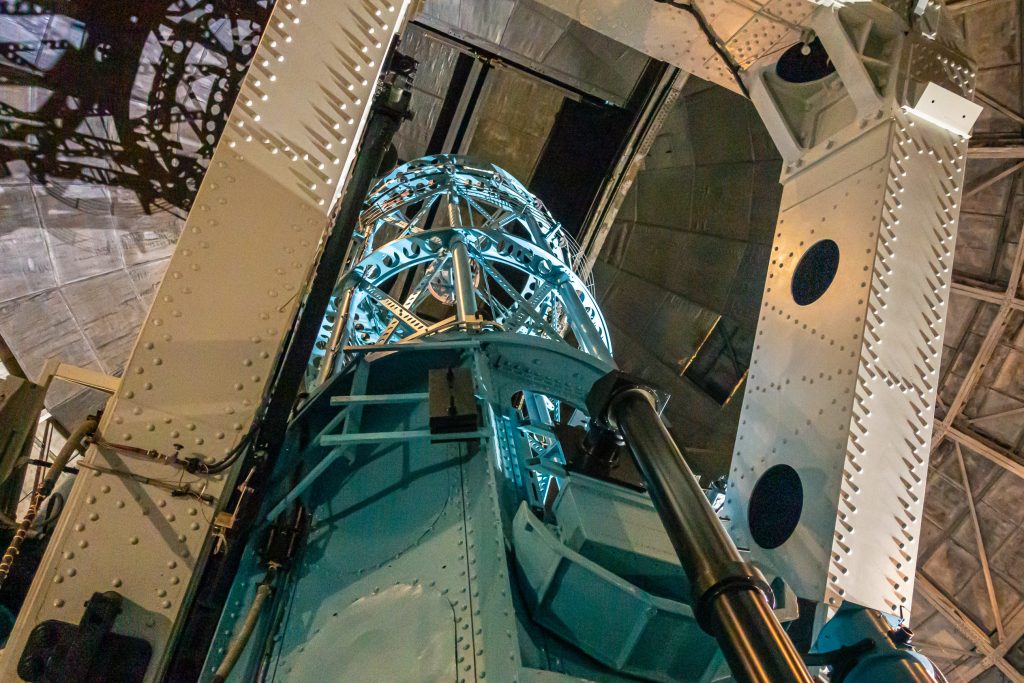
He went on to show that the farther a galaxy is from us, the faster it is moving away from us. This showed that the universe is expanding. This has led to the Big Bang theory which is foundational to cosmology today (no comment on the TV show). Three fundamental discoveries in astronomy and astro-physics all made on Mt. Wilson just a few miles from downtown Los Angeles. Pretty cool, don’t you think?
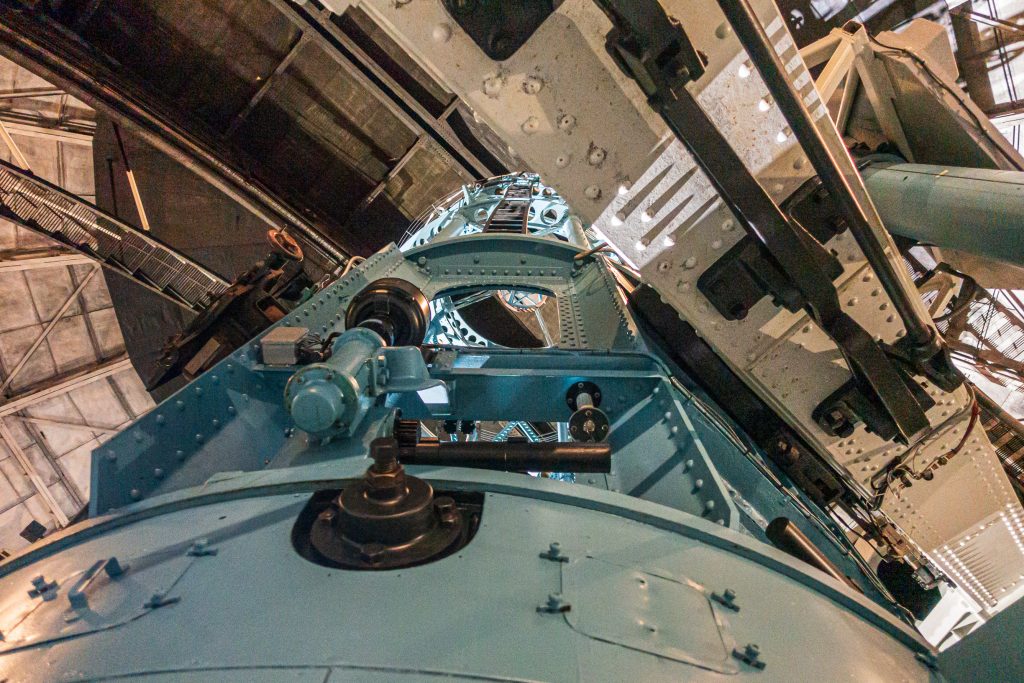
It was very much fun to get up close to the telescopes and equipment. The Mount Wilson Institute is doing a great job maintaining the observatory.
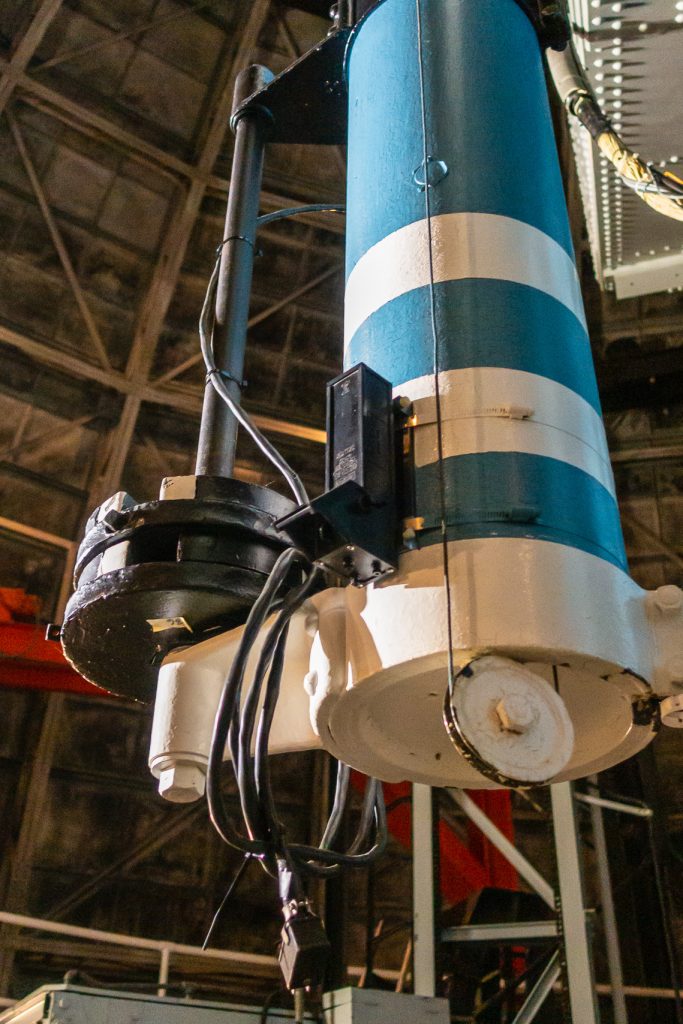
The Hooker Telescope has two Telrads. One on each side of the scope.
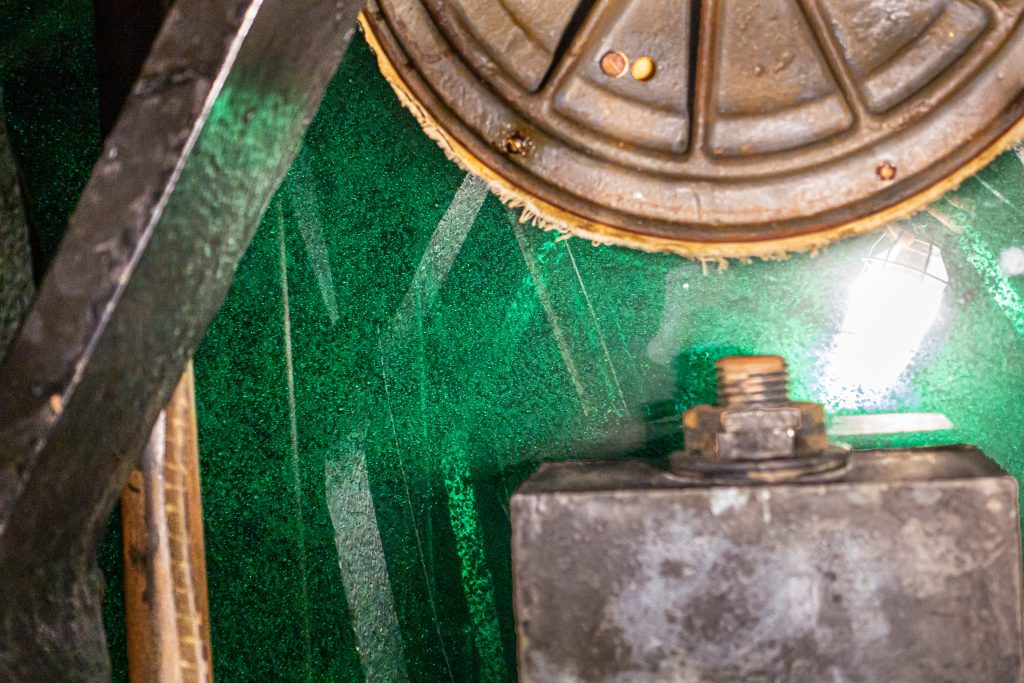
The glass of the 100-inch mirror is not clear or perfect. It is full of what look like bubbles. But it was able to be ground into the perfect shape to be effective as a telescope mirror. Every 3-4 years they take it out and put a new coating of aluminum on it so that the reflectivity does not decrease over time.
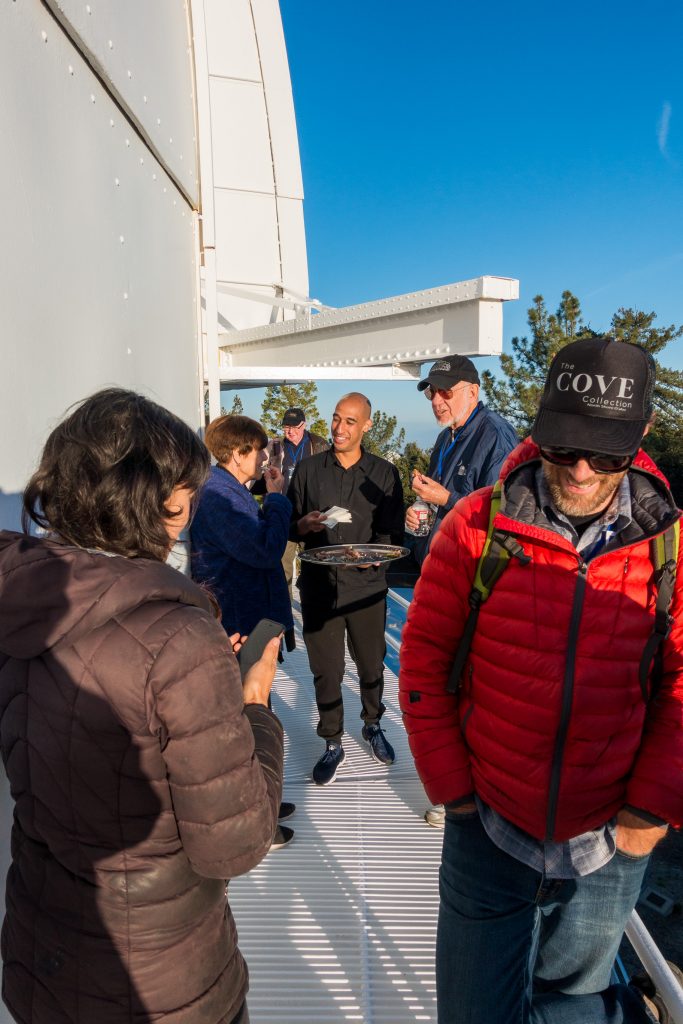
Now it was time for food and fun. Hors d’oeurvres were served, even on the catwalk around the base of the dome, about 50 feet above the ground.
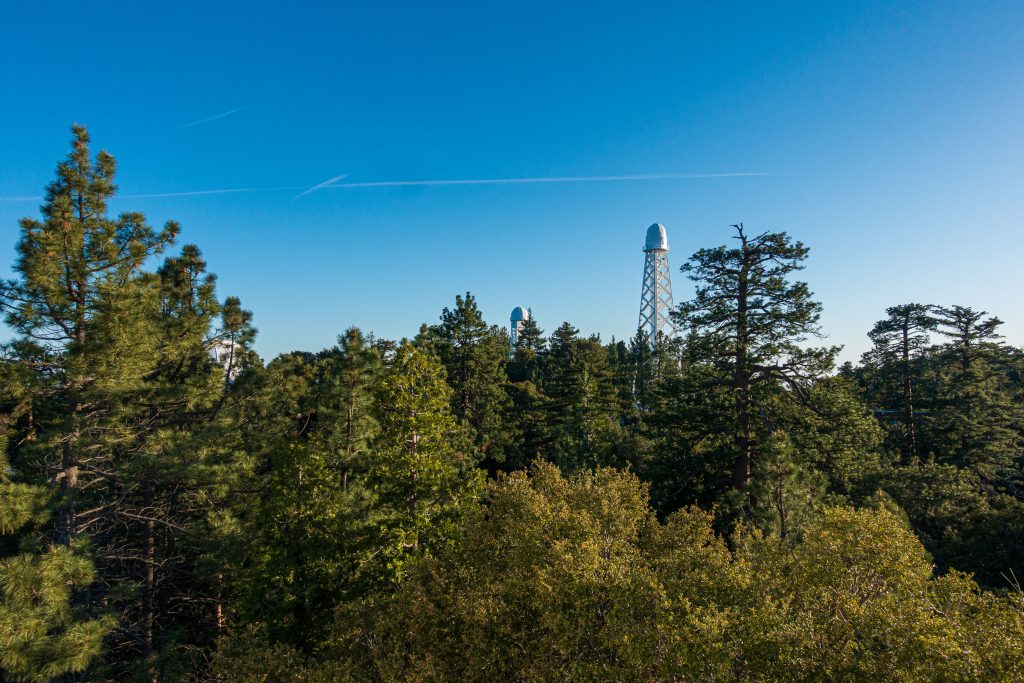
There are nice views from the catwalk. Here are the two solar towers with the dome of the 60-inch Telescope on the left behind the trees.
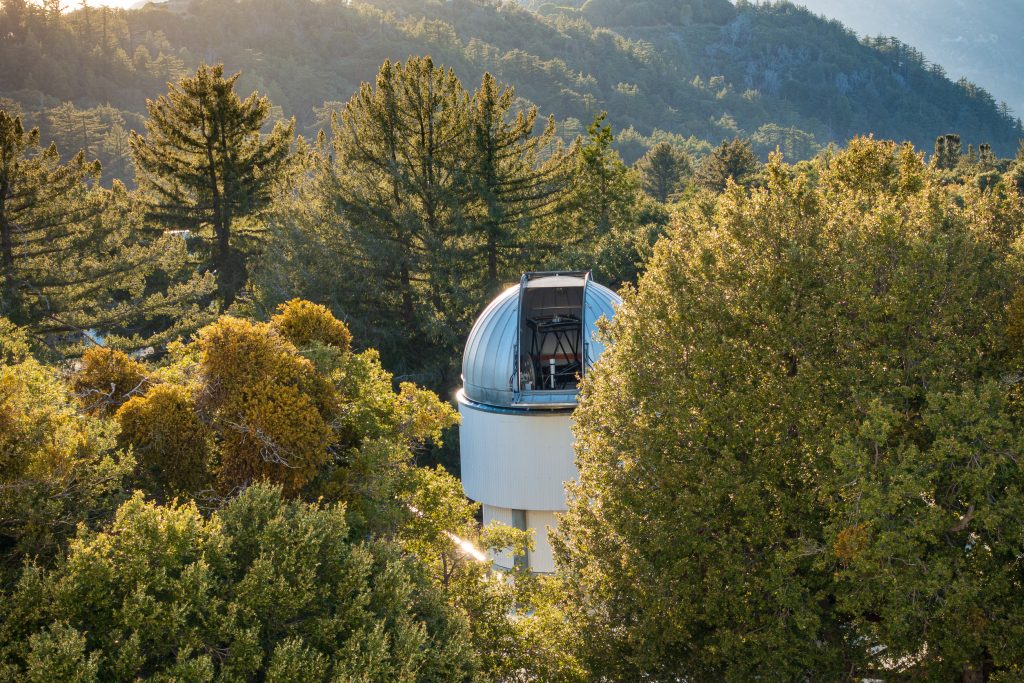
This is one of the CHARA array telescopes, opened to cool in preparation for observing in the evening. There was a fascinating talk about CHARA earlier in the day. CHARA (Center for High Angular Resolution Astronomy) uses multiple telescopes spread out over a large area, combines the light they collect and creates images that have very high resolution. They can image the surface and size of stars. It was installed in 2004 and is now going through a major upgrade with the addition of adaptive optics.
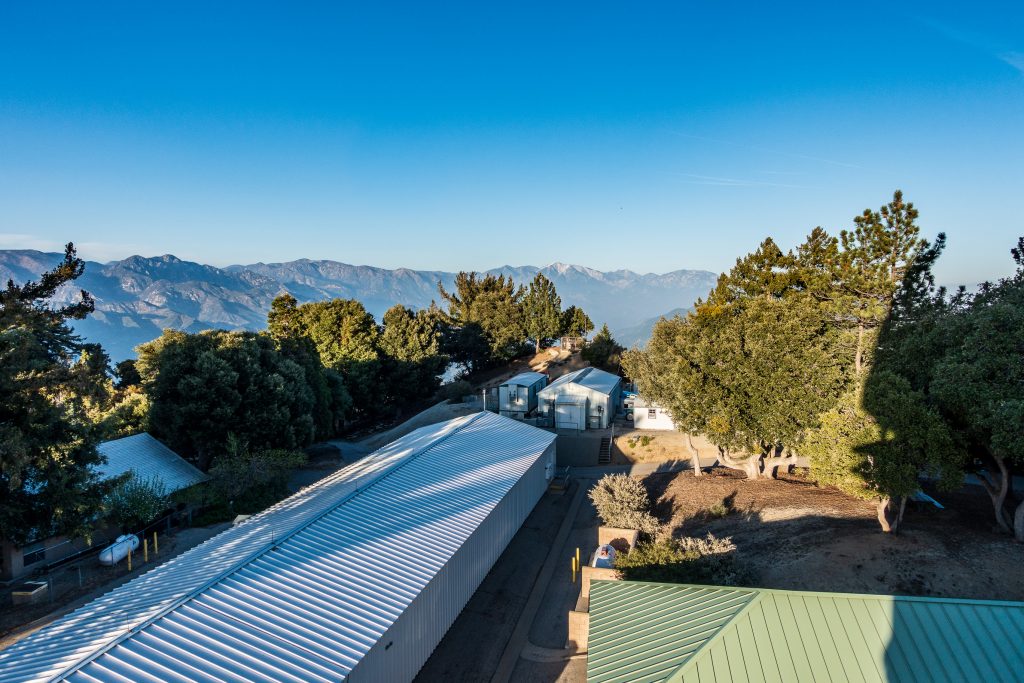
Mt. Baldy, with a little snow, was visible in the distance. The CHARA beam combining building is in the foreground. Let’s just say that combining light from multiple telescopes into one stream of data is complicated.

We are back inside for dinner. The only mirror that is not covered when not in use is the secondary mirror you see in the picture above. It is facing down when not in use and so does not have the same risk for dust. There was a wonderful talk after dinner from Marcia Bartusiak, a journalist with an advanced degree in Physics. Her book on Hubble’s discoveries is The Day We Found the Universe and has good reviews.
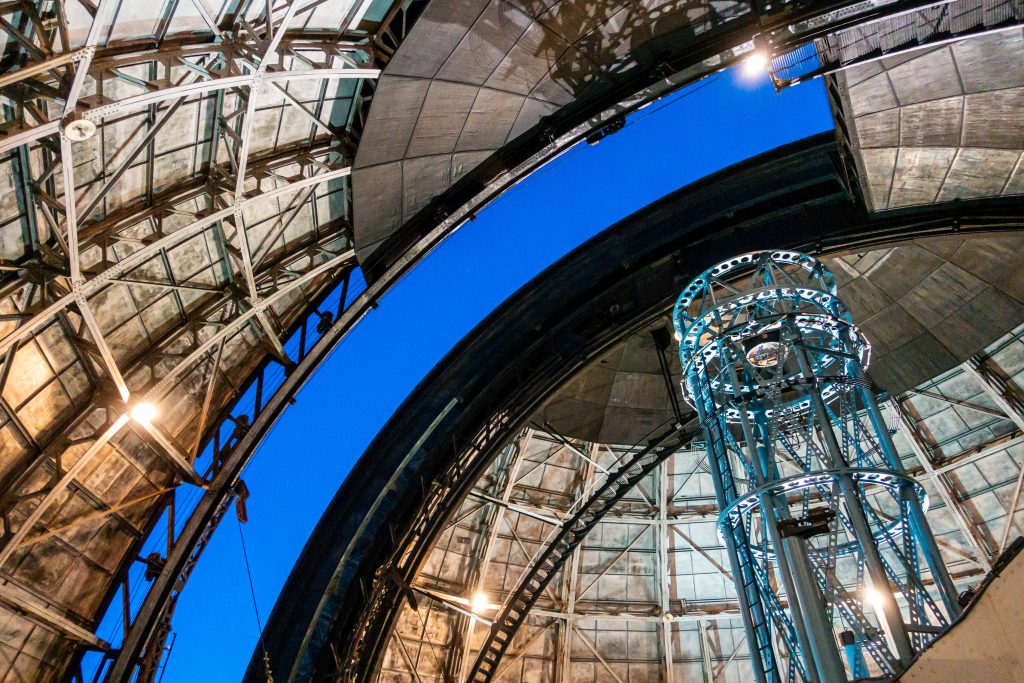
The doors to the dome are opening in preparation for viewing.
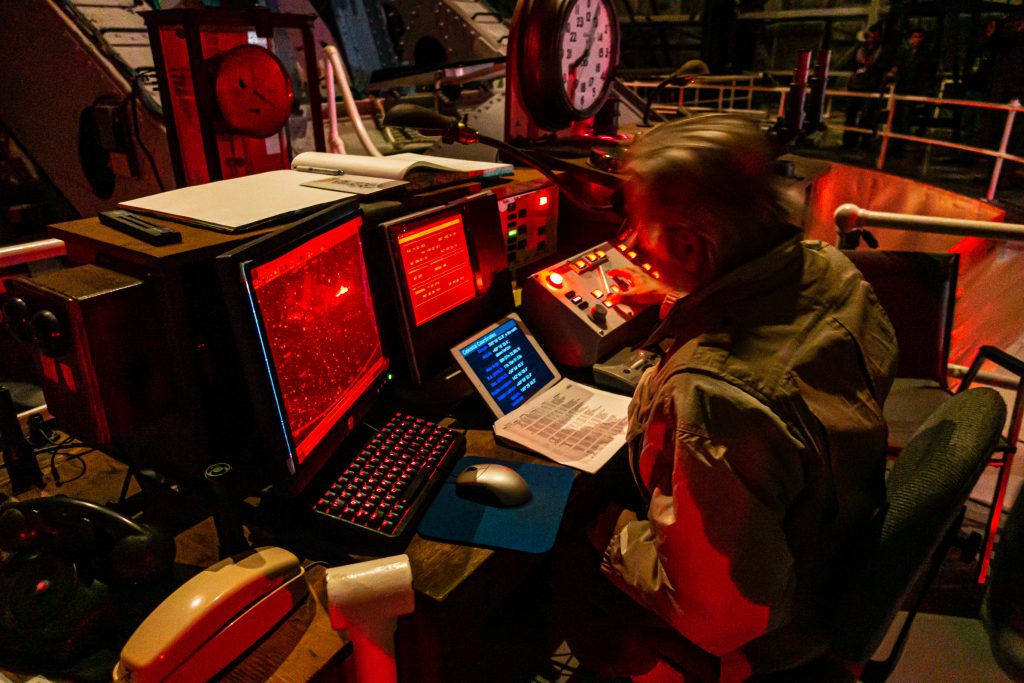
The operator at the controls with what appear to be three generations of technologies to get the job done.
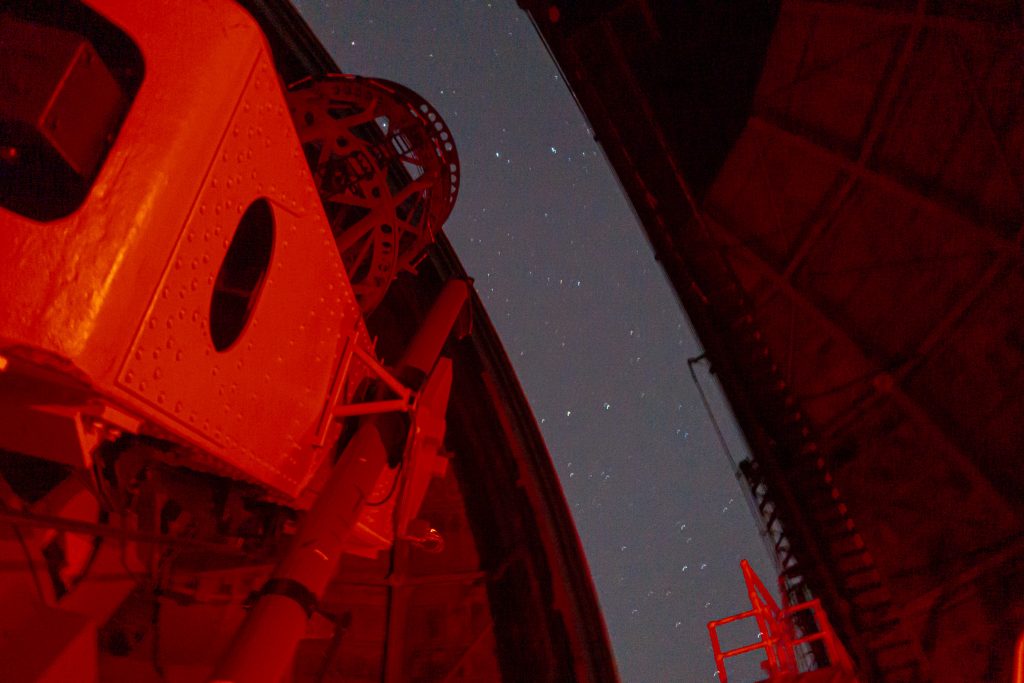
We spent a couple of hours viewing. There were 30-40 people so we looked at about five objects. It was fun to know that I was looking through the instrument that had a foundational impact on our understanding of the universe.

You must be logged in to post a comment.